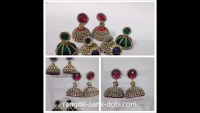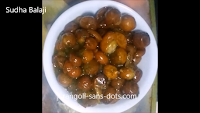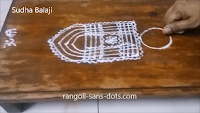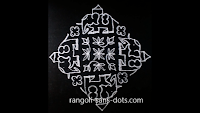Jhumka making at home step by step pics

J humka making at home step by step | Tutorial through images The tools are scissors, pliers and cutter. The steps involved a) Take ten strands of silk thread - ten is just a convenient number ,we can take more or less b) Cut excess length of string at both ends. c) Apply fabric glue at both ends so that all the strands stick together d) Apply glue to the plastic base of the jhumka e) Stick the silk thread where we have applied glue f) Allow it to dry so that is sticks firmly f) Insert the other end of the silk thread in the hole of the base g) Continue this till the entire plastic base is covered with silk thread h) Stick stone chain to silk thread on the base i) Then make ear studs with canvas, mirror , chain ( follow the images below ) Artificial Jhumka collection Jhumka making material The material we need are, jhumka base, silk thread, eye pins, metal beads, ear stud base, fabric glue , canvas , metal spacers, stone chain and craft spring The advantage of



